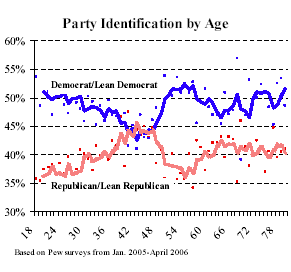Here's something else from Frank Morgan:
The Prime Number theorem says that the probability P(x) that a large integer x is prime is about 1/log x. At about age 16 Gauss apparently conjectured this estimate after studying tables of primes. Greg Martin suggested to me [Morgan] the following heuristic way to approach the same conjecture, which appeared in my Math Chat column on August 19, 1999:
Suppose that there is a nice probability function P(x) that a large integer x is prime. As x increases by
the new potential divisor x is prime with probability P(x) and divides future numbers with probability 1/x. Hence P gets multiplied by
or roughly

The general solution to this differential equation is P(x) = 1/log cx.
Interesting. Every now and then when I've been stuck in a boring meeting, I've amused myself by trying to come up with a heuristic derivation of the prime number theorem but never with any success.






































Recent Comments